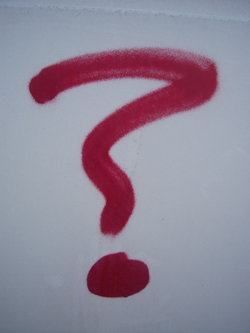 Leadership is another of those things that people find hard to define, but can recognise it when they see it. I recently googled “leadership definition” and got 151 million hits, an indication that there are many definitions out there. A dictionary is usually a good starting point to understand a term. Here’s how Merriam-Webster defines leadership:
Leadership is another of those things that people find hard to define, but can recognise it when they see it. I recently googled “leadership definition” and got 151 million hits, an indication that there are many definitions out there. A dictionary is usually a good starting point to understand a term. Here’s how Merriam-Webster defines leadership:
leadership noun \ˈlē-dər-ˌship\
1: the office or position of a leader
2: capacity to lead
3: the act or an instance of leading
For once, the dictionary is not so helpful. So, let’s continue and see what some of the great thinkers on leadership have to say.
Peter Drucker defines the term leader pithily: “The only definition of a leader is someone who has followers.” However, that seems a little to pithy for my taste. Are you only a leader once you have followers, or do you attract followers through displaying leadership? (This is akin to the old philosophical question about whether a falling tree in the forest makes any noise, if there’s nobody present to hear it.) John C. Maxwell made an early attempt to fill out the dictionary definition, “leadership is influence – nothing more, nothing less.”
The coiner of the term transformational leadership, James MacGregor Burns, expanded on the idea of influence thus: “I define leadership as leaders inducing followers to act for certain goals that represent the values and the motivations – the wants and needs, the aspirations and expectations – of both leaders and followers.” Bernard Bass defined this in terms of how the leader affects followers, who are intended to trust, admire and respect the transformational leader.
Warren Bennis added another layer to this, “leadership is a function of knowing yourself, having a vision that is well communicated, building trust among colleagues, and taking effective action to realize your own leadership potential.” So, one way of being better able to influence others is through knowing yourself, your strengths and weaknesses. John Kotter points to another aspect in “Leadership defines what the future should look like, aligns people with that vision, and inspires them to make it happen despite the obstacles”. Tenacity is a key quality in research, the willingness and ability to keep attacking a problem or question until it yields its secrets.
From the area of research come two other definitions, which are pretty close to those from the mainstream literature. Alice Sapienza author of Managing Scientists: Leadership Strategies in Scientific Research writes “leadership is an influence process that is noncoercive in nature and produces acceptance or commitment on the part of organizational members to courses of action that contribute to the organization’s effectiveness”. In Making the Right Moves (available for download from HHMI), Edward O’Neil (UCSF) condenses it to an equation:
Leadership = Vision + Relationships + Tasks
This equation helps to illustrate why I place so much emphasis on skills and tools that support relationships in my leadership sculptor® process.
When I ask researchers to describe leadership, they give me a wide variety of viewpoints. One such description is of someone I would term a boss, someone who directs people to achieve a goal. In such a definition, the research leader is relying on their position, their scientific ability and on their research funding (in the literature, this is labeled assigned leadership). While such a style can work well in an emergency, Daniel Goleman et al’s research has shown this to be less effective in other settings. One indicator of an overdose of “boss” in R&D settings, in my experience, is the above-average staff turnover or drop-out rate in such a group or department. Other viewpoints echo the literature: having and being able to share a vision, getting people to do their best, maximizing results, having and transmitting ideas.
R&D takes place in an intense environment – you’re either first to a result, or nowhere. There are no 2nd prizes. That’s why, in my definition of leadership I make visible a counter-balancing aspect to save researchers from themselves:
Leadership is the art of maintaining a dynamic balance between influencing others, by word and deed, to reach common goals and ensuring their development and well-being.
Photo: Margaret Anne Clarke

[…] I published an earlier version of this article on January 19, 2012. […]